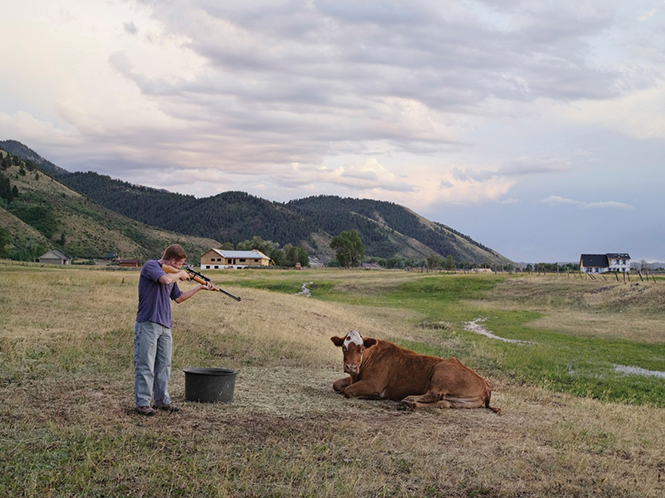More than Heroes and Villains
In This Land, Christopher Ketcham roams the West in search of both, and misses a lot in between.
By Carl SegerstromChristopher Ketcham tromps around the region in his new book, This Land: How Cowboys, Capitalism, and Corruption are Ruining the American West, and throws predictable stones at environmental degradation. Through litanies of wrongdoing, Ketcham makes a pugnacious argument against despoilers of public lands, chronicles the many failures of federal oversight, and harangues corporate softening of the environmental movement.
These screeds aren't without merit. For the most part, they are based on facts and include apt descriptions of environmental destruction and corruption. But the arguments and examples Ketcham provides are often reductive. Complex resource issues are reduced to destruction versus preservation. Federal employees are either the few brave whistleblowers Ketcham talks to or a legion of enablers paving the way for the industrialization of wilderness. Ketcham's West becomes a landscape for the preservation and enjoyment of those with the physical capacity and leisure time to seek it out, not a place to live on or make a living in.
This Land begins with Ketcham watching a bulldozer plow through stands of juniper and piñon pine in the Egan Range of northern Nevada. Seeing the gnarled trees subjugated to the machine sends him clutching his copy of Edward Abbey's The Monkey Wrench Gang and contemplating eco-sabotage to halt the Bureau of Land Management project. The scene pulls on the reader's heartstrings, as do many in the book. Ketcham has a knack for impassioned scene-setting, indulging the senses in his descriptions of each landscape he bears witness to. But, much like the dozer, Ketcham plows right past any nuanced discussion of the Egan Range project, simply writing it off as a favor to cattlemen who will benefit from the removal of the trees.
In fact, a healthy debate exists over the merits of this project, one of many intended to reverse the growth of piñon and juniper stands as they overtake sagebrush habitats across the Great Basin. Obscured by Ketcham's vitriolic prose is the fact that range managers and wildlife scientists alike have hearty disagreements over the wisdom of such removal projects and whether this ecosystem is out of balance due to fire suppression and grazing. Those discussions, and many others, are overwhelmed by Ketcham's desire to set clear battle lines, context and compromise be damned.
In overlooking the nitty-gritty details of public-land management and not even attempting to reconcile how and why communities exist in rural areas, Ketcham crafts an image of the West as a landscape of heroes and villains—and does this complicated region a great disservice. Ketcham has no time for mundane questions, such as how people make a living in places like Colville, Wash., or Kanab, Utah, or how they might cope with the collapse of extractive economies in places like Farmington, N.M., or Gillette, Wyo. He also gives no voice to the dispossessed Indigenous peoples whose former lands now make up his unspoiled wild places. To Ketcham, who comes to the West to escape another villain—"Homo urbanus iPhonicus ... in my native habitat of New York City," it appears that the people who actually live here are either on the take for industry, doing the bidding of The Church of Jesus Christ of Latter-day Saints, or just too dumb to stand up for the natural world around them.
This simplistic view erases the experience of regular people, the kind of people who might not have time to worry over the wolf as housing prices climb—the kind of people who might love the range and care about its future, but are also trying to keep the family business running; the federal biologists who might love the habitats they work in, but can't afford to blow the whistle lest they lose their jobs and risk missing their college loan payments. These stories, the everyday stories of this land, are full of compromise, heartache and internal strife. But they just don't fit into the narrative Ketcham is selling.
Near the end of his book, Ketcham lays out a simplistic vision of a West where people and their machinations are removed from federal lands and the "wild," whatever that is, is left to its own devices. "Sometimes I'm glad my job as an investigative reporter is mainly to lay demolitions under the corrupt structures, blow them up, walk away, and let you folks deal with the rubble," he writes. Despite his bombast, Ketcham doesn't drop any new bombs. Instead, he merely scratches away at well-worn craters. In doing so, he reduces the West to a battlefield, when it has always been so much more.
Latest in News
Readers also liked…
-
Raise a glass for E.L.T Harrison, architect of the Beerhive building on Main
Small Lake City
- Oct 11, 2023




